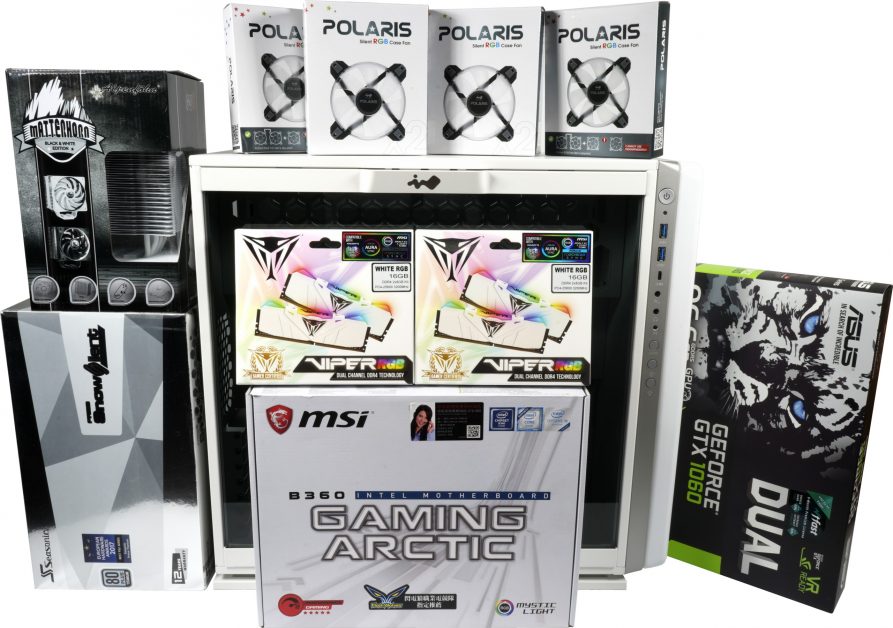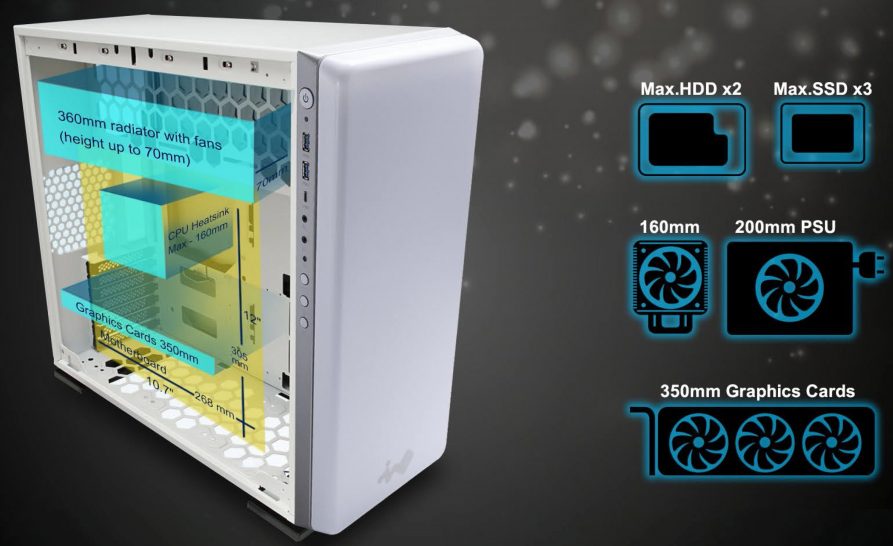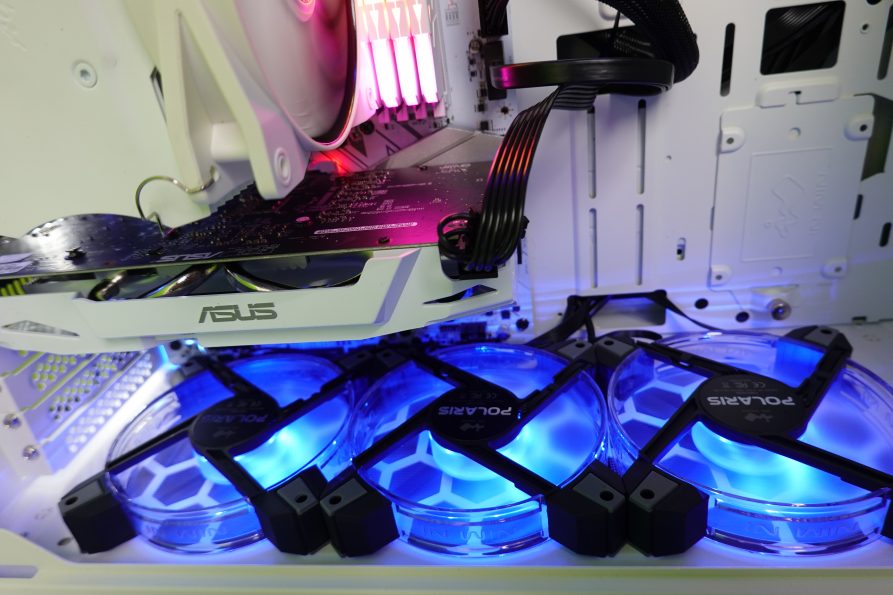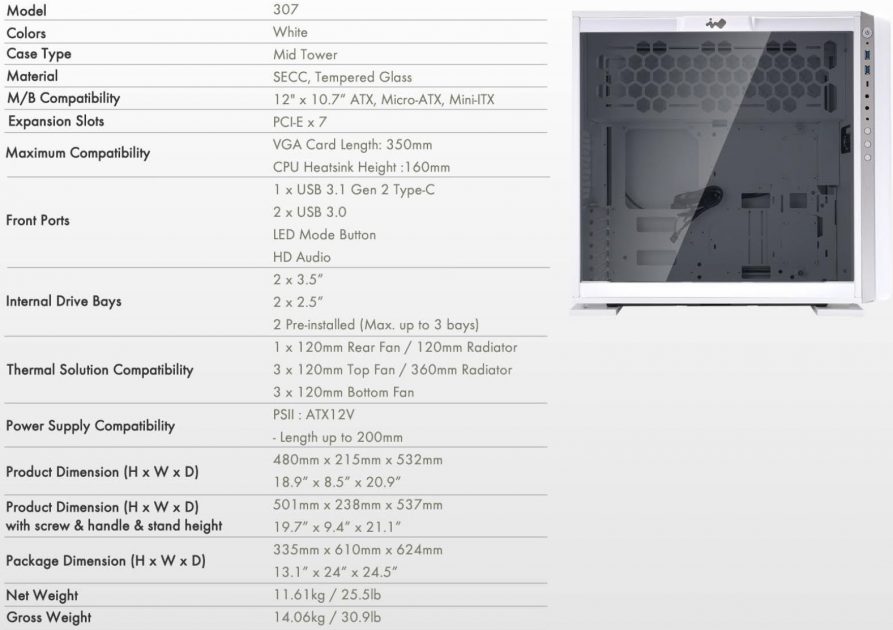I did it again. And more RGB is nuptitn ing.. With the large and full-surface RGB matrix in the front panel, the InWin 307 is something like the reincarnation of the matrix for the home. Only in white, but solid. Of course, a midi tower in the price range from 300 euros is no longer a bargain, but niche has always been expensive. And in times when gaming graphics cards quickly cost around 2000 euros, such an exclusive lighthouse is almost a bargain again.
As a logical consequence, I don't just build something, but just pull the niche consistently behind me on the red stripe. If so, then everything else in white and with colorful blinkers on the cape. Why stop halfway? With light, life is twice as beautiful and before the interior becomes a dark tomb, I now incorporate colour-matching components, even if it was not so easy to get it all at all.
With almost 12 kilos of unladen weight, the midi case is already a real bunker, because the dimensions are not really oversized with 48 cm in height, 21.5 cm in width and 53.2 cm in depth. The weight is due to the fairly solid 0.8 mm steel and the door with the Tempered Glass. The front with the LED matrix, on the other hand, is only a lightweight bycatch. It is torsion-stiff, I can confirm, because it has survived several transports in the packed state loosely and harmlessly.
.By the way, you are responsible for the fans yourself, there is nothing that I don't even find negative, because most of the time you throw away the originals first. I rely on a total of 6 Polaris fans from the same manufacturer, which I connected to the motherboard via a hub. Since the front does not allow any fresh air supply, I have to propeller mercilessly from below. Three fans should be enough for this. Another sits at the back of the rear wall and the remaining two at the top in the partition wall of the aspiring two-chamber housing, where the power supply is placed standing behind the upper divider.
The front panel still requires a free, internal USB 2.0 port, but no more drivers. If you want to edit the effects, you will be happy with the in-house "Glow" software. But there's more to it. From a purely housing point of view, the 307 goes its own way, it even has to, because the front as a supply of fresh air completely fails.
And otherwise? The white powder coating is fine, the gap dimensions are also. The locking mechanism of the door is free of puzzles and it is rather something like an oven door that you can fold down and take out. The rest is self-explanatory.
The side control panel (turned 90° here as an illustration) offers 2x USB 3.0 in addition to the on/off and the reset button, as well as a USB 3.1 Type C as well as the usual HD audio connections for headphones and microphone. In addition, there is the switch for the modes of the LED matrix and the two buttons for brightness control. So you can control the front panel without software. You really only need them for individualization.
Normally, the back side still offers enough space for the disks. However, i had chosen an NVMe-SSD on the motherboard, comfortably as I am. The rest of the facts and data can be found in the following table, even though I have already explained the most important thing:
And if you would like to see all this as a video, you can of course also use our YouTube offer on the next page, because there are almost 10 minutes free to the house. Otherwise it's time to keep scrolling, because I also installed the already mentioned white hardware, which was not so easy to procure. But in the end everything goes, it's a matter of honour. And if you want to know more – here is the manual for scrolling through, also for programming the front panel:
Manual















































Kommentieren